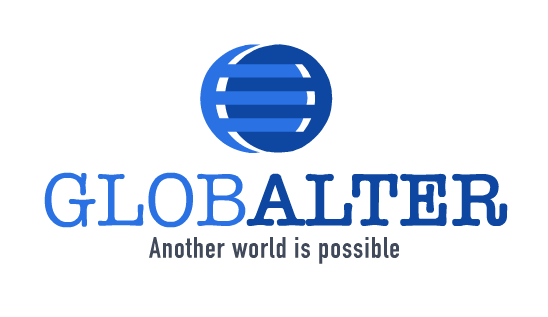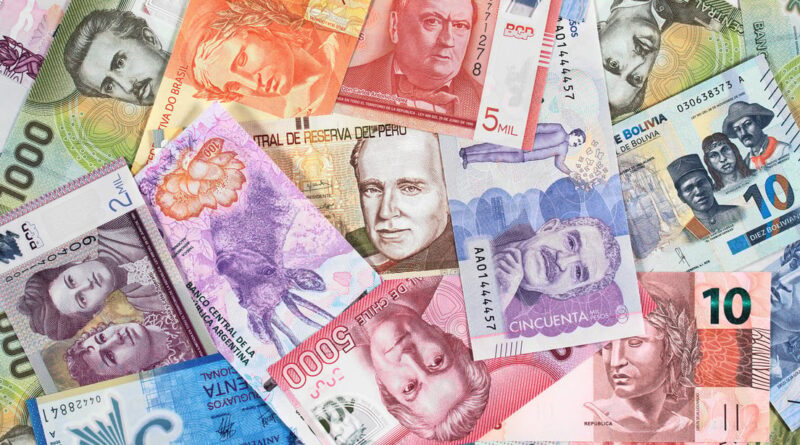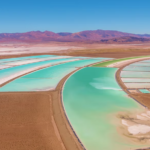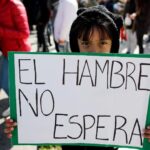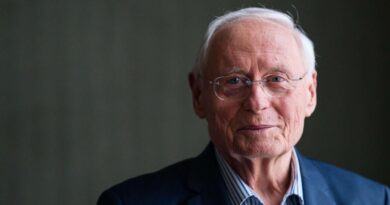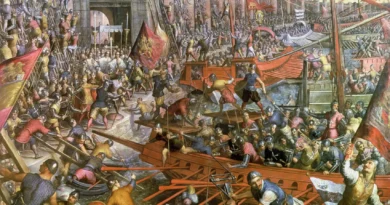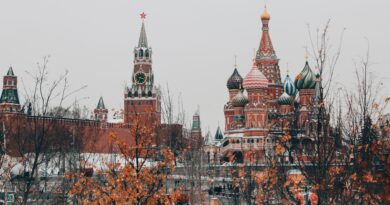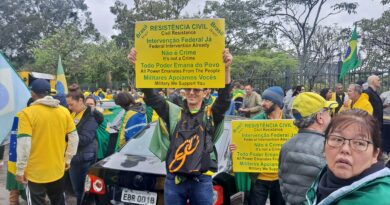In search of a common South American currency
CECILIA VALDEZ
Buenos Aires
One of the great novelties brought by the CELAC (Community of Latin American and Caribbean States) Summit in Buenos Aires last January, in addition to the return of Brazil to the bloc led by Lula, was the announcement of a common South American currency. A project that is not new -since both the currency and a common bank were ideas raised and materialized by the first wave of progressive governments-, but that is being debated again today within the framework of a Latin American region once again leaning to the left ( with all possible nuances inside it), and with the novelty that this time it includes Colombia.
The two largest economies in the region (Brazil and Argentina) are rethinking and coordinating economic policies, and they made it clear in a document that they made public on the Sunday before the start of the VII CELAC Summit. Lula arrived a day before the other 15 leaders who also participated in a Summit that had, for the first time, the perfect attendance of its 33 members, and held a bilateral meeting with Alberto Fernández, president of Argentina. At the end of the meeting, both leaders released a document in which they highlighted, in addition to the importance of Brazil's return to the bloc (after being absent during the Bolsonaro government), the need to collaborate and coordinate economic policies. Specifically, the text talks about the reindustrialization of economies, energy integration and production chains, Mercosur as a platform for integration into the world, and the use of local currencies and a common South American currency. Regarding the latter, he points out: “We intend to overcome the barriers to our exchanges, simplify and modernize the rules and encourage the use of local currencies. We also decided to advance discussions on a common South American currency that can be used for both financial and trade flows, reducing operating costs and our external vulnerability."
In the press conference after the bilateral with Fernández, Lula said: "If it depended on me, I would always have foreign trade with the currency of other countries so that we are not depending on the dollar" and added: "Why not try to create a common currency with other Mercosur countries as was attempted with the BRICS countries? All these declarations were read with great enthusiasm by those who fight for an alliance between Latin American countries and, above all, by those who go a step further and allow themselves to be enthusiastic not only about the creation of a common currency that enables commercial exchanges, but also about the idea of a New Financial Architecture. "It's going to take a while to establish the necessary adjustments for its consolidation," says Quintino Severo Marqués, assistant secretary for International Relations of the Single Central of Workers of Brazil. “Among other things, due to the enormous asymmetries between the countries of the bloc, which require great planning to establish a common regime. Still, I think it's a great opportunity." Although the project for a common South American currency is not new, the context is. Although many try to establish parallels between this new wave of progressive governments and that of the beginning of the century, the world is not the same and, therefore, neither are the rules that order it.
A Little History
In 2008, the proposal for a common exchange currency gave rise to a voluntary agreement between the Central Bank of Argentina and the Central Bank of Brazil which, in 2009, was extended to the exchange between Argentina, Paraguay and Uruguay. Although they are current agreements, they did not have the necessary impact or the political will required by the parties for their completion. In 2009, UNASUR, meeting in Buenos Aires, encouraged the creation of what was called a "New Financial Architecture" (NAF), supported by the Bank of the South, a proposal assumed by 7 presidents of the region at the end of the 2007 and that until today constitutes a pending subject. For Julio Gambina, economist and university professor, part of the failure is due to the limits imposed by thinking about it in terms of a “national capitalism” that sought to go against the transnational domination of capital.
For the rest, the proposal for a NAF included the creation of a Fund for the South and the development of a currency for regional exchange. "There were several countries that provided their own resources to advance with the capital of the Bank of the South," says Gambina. “The then Minister of Economy of Bolivia, and its current president, Luis Arce, stated that he had the reserves to apply as capital to the Bank of the South, and proposed that all the international reserves of the countries that intervene in the bank be deposited in the same, changing the financial logic of the system because our countries have international reserves based on what the world financial system demands”. Or what is the same, in currencies or in strong currencies of the main countries of global capitalism (dollar, euro, yen, and more recently the yuan). “The great concern of those who decide is to get hold of dollars or other strong currencies in the market. It would be different if the option were for a profound transformation of confrontation with the hegemony of the dollar or the euro.”
What it is basically about is displacing the dollar as the currency of exchange in foreign trade, and doing it with alternative currencies. Strictly speaking, it is not a "single currency" that would replace local currencies -at least not initially-, but a unit of account that is used for trade between the countries of the region, accompanied by a compensation system between central banks of those same countries. In recent decades, the course of the world economy has changed considerably and we find ourselves in the midst of a logic of globalization of the economy that is expressed in Free Trade Agreements, Bilateral Investment Treaties and in various processes of liberalization of the economy. According to Gambina, "the world economy, even if it is explained that it is due to the pandemic or the war, is in a process of fragmentation."
alternative integration
The fact that Lula has chosen Argentina as his first trip abroad, prior to his trips to the US and China, is a gesture with strong symbolic weight. They say that the current Lula, who read in prison and placed special emphasis on his training in geopolitics, has decided to forcefully promote regional integration mechanisms and build a Latin American bloc that will allow the region to negotiate as such and, in this way, way, offset the enormous asymmetries generated by negotiations between countries.
"Brazil is fundamental, not only for CELAC but also for thinking about a regional strategy and an alternative integration mechanism”, says Gambina. “Historically there has been a subordination of Latin America and the Caribbean to the world economy as suppliers of raw materials, and a stimulus to the relative deindustrialization that is currently seen with lithium, hydrocarbons, minerals, etc. It is necessary to think and discuss a different financial productive logic in the region, to think about how to insert itself into the world economy and, in that logic, discuss with those who are discussing the world order today, such as China or the US.”
Severo Marques -who traveled to Argentina to participate in the social CELAC, a Summit parallel to that of the official CELAC in which five hundred leaders of social movements, trade unions, environmentalists and native peoples of Latin America and the Caribbean participated-, also He believes that this third term of Lula will be very different from the previous ones and that this trip to Argentina aims to reestablish international relations (post Bolsonaro) and strengthen CELAC. “Lula knows that any individual negotiation of MERCOSUR countries outside the bloc (he is referring to Uruguay) can be detrimental and weakens it, and he will do everything possible to negotiate as a bloc. Because although not all governments have the same ideology, Lula is convinced of the importance of ideological diversity, and that in the economic and social field we have to have unity so that the interests of the people are defended first.“
An issue that worries and generates debate regarding the realization of these types of projects has to do with their lack of continuity or sustainability over time because, in many cases, they depend on the different political circumstances. In this case, not only is the bloc's diversity of political projects of concern, but also that Argentina, Brazil's main trading partner in the region, has general elections scheduled for October of this year and that means a change of government for another that It could be of a different political sign than the current one. However, Severo Marqués believes that this does not necessarily represent a problem: “I think that Lula, or any president, should treat these issues as state affairs, which concern economic and political issues. The construction that Lula and the other presidents are doing is considering scenarios where the governments are not necessarily of similar ideologies. I believe that Lula has the ability to lead this process in the region, and the conviction that what he has to be in the first place is the interest of the people and the people. So - and I know that Lula shares this vision - what you have to build are bases that strengthen MERCOSUR and State policies, not government policies, because governments pass and policies remain."
World order
Gambina maintains that in the current world context it is necessary to change the logic of liberalization of the world economy, break with the logic of financial, credit and banking policy, and stop the so-called free movement of international capital movements. In particular, in Latin America and the Caribbean, if you want to change the trend towards foreignization, capital flight, the primarization of exports, and resolve the demands of misery, poverty, unemployment and job insecurity, it is It is necessary to modify the production and development model, which supposes a reorientation of the finances of the exchange and monetary policy: "On this level, discussing the Bank of the South and the currency issue is key," he concludes. “Above all, when there is a global currency crisis. The IMF itself has been doing studies where it says that 20 years ago the international reserves of the countries were 70% paralyzed in dollars and that this has been reduced to less than 60%. Clearly, the unilateral sanctions of the United States -which Europe accompanies- on Russia, China, Iran, Venezuela, Cuba, Nicaragua and a group of countries, have led to the creation of new financial, monetary and commercial exchange instruments, and this is a time where there is a lot of novelty. What is happening is a disorder of the order built in the last 40 years. So, it is an opportunity to redesign the world system and of course, if there are governments with the will to transform better. The bottom line is that capitalism is global, the economy is global, and therefore, changes cannot be faced only from one country. And that is why these debates generate expectations to promote non-subordinate regional integration. Let's say that Latin America and the Caribbean is a relatively new territory, and CELAC emerged just over a decade ago, it is also a novelty. This is the first time that the Latin American and Caribbean region, without the United States or Canada, decides to think of itself as a whole. What is proposed is minimal, but from that minimum, one can imagine the maximum.”
Cecilia Valdez She is an Argentine journalist.
